-
I'd have to say that all the time these degrees calibrated compasses were in use, post war, (and in the war too) in the Western Desert on 200 mile long range reccy and rescue patrols, operating, direction finding and navigating and training only with compasses, they seemed to be accurate enough then! In my book, that says it all
And in GULF 1, when the GPS satellites were switched off, guess what we used...............
-
-
10-11-2010 01:25 PM
# ADS
Friends and Sponsors

-
A compass I am sure Peter, but was it in degrees or mils??? LOL.
Союз нерушимый республик свободных Сплотила навеки Великая Русь. Да здравствует созданный волей народов Единый, могучий Советский Союз!
-
-
-
Advisory Panel


As a matter of interest Son, do you have an RAEME Instrument shop there? Are you still using these prismatics? We had them in Aust. Malaya and SVn as I recall
No instrument shop here, Peter. Yes, they still use the prismatic compasses, but all repairs are done in Sydney. I'm sure they used to do them here, but I don't know how far back that was.
-
-
I'm not sure where the Army and Air Force get their instruments calibrated, but in Canada the Navy has two instrument repair/calibration shops, one in Esquimalt, BC and the other in Halifax, NS. They do everything from compasses to digital survey total stations.
the Navy has two instrument repair/calibration shops, one in Esquimalt, BC and the other in Halifax, NS. They do everything from compasses to digital survey total stations.
Союз нерушимый республик свободных Сплотила навеки Великая Русь. Да здравствует созданный волей народов Единый, могучий Советский Союз!
-
-
You know, what amazes me is just how good the quality os on the Commonwealth prismatic compass. It really is quite a good piece of kit and there are just so few commercial compasses that can compare to a MkIII or an M73 compass. Anyone know of any other really good compasses out there? Liquid damped, jewelled pivots, illuminated with tritium, solid machined brass body construction, etc.?
Союз нерушимый республик свободных Сплотила навеки Великая Русь. Да здравствует созданный волей народов Единый, могучий Советский Союз!
-
-
The quality amazes me too. I taught my son to map read using a prismatic - in degrees of course - but in the school Cadet Force, they used silver compasses so he had to do a bit of quick re-learning. But the principle was the same. Out on the pretty desolate Cumberland fells he was pretty good and had to correct me a couple of times when it came to plotting our exact location on the map using back bearings. Hopefully some of it and the ability to live off the land for a couple of days will stick in his memory. He never quite grasped the magnetic variation thing though!
Just the work involved in engraving the old original case through 360 degrees with all the sector markings. Jeeeees, just how time consuming on an old pantograph engraver with the case set in an indexed rotating head.................
Last edited by Peter Laidler; 10-12-2010 at 08:49 AM.
-
Thank You to Peter Laidler For This Useful Post:
-
Here's another question for you Peter, do the MkIII's still in stores retain the older (and prone to embrittlement) red rubber friction rings on the base, or are most of them upgraded with newer replacement rubber rings?
Союз нерушимый республик свободных Сплотила навеки Великая Русь. Да здравствует созданный волей народов Единый, могучий Советский Союз!
-
-
The quality amazes me too. I taught my son to map read using a prismatic - in degrees of course - but in the school Cadet Force, they used silver compasses so he had to do a bit of quick re-learning. But the principle was the same. Out on the pretty desolate Cumberland fells he was pretty good and had to correct me a couple of times when it came to plotting our exact location on the map using back bearings. Hopefully some of it and the ability to live off the land for a couple of days will stick in his memory. He never quite grasped the magnetic variation thing though!
Just the work involved in engraving the old original case through 360 degrees with all the sector markings. Jeeeees, just how time consuming on an old pantograph engraver with the case set in an indexed rotating head.................
I totally agree. For example, this is what the US used just before WW2 - the M1938. It was made of brass but had no reading prism, just a magnifying glass where you have to alight the sighting hair with the notch in the top and angle the magnifier to try to half-read the value off the card. Not very good compared to the prismatic compasses in use in the Commonwealth.
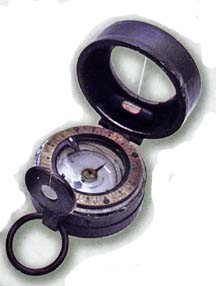
The US then went even more cheapo and issued this plastic-fantastic compass for most of the war. It was, IMHO, uber-crappy and if I was a USGI in WW2, I'd have been searching dead brits for a decent bit of kit.
From olive-drab.com, because they say it rather well and I don't want to re-phrase their already widely held opinion:
Unfortunately this compass design was not moisture-proof or waterproof, leading to problems in the field in Vietnam. Like all magnetic compasses, the needle aligns itself with the local magnetic field and is attracted by nearby objects containing iron or electric circuits. If it is tilted only a few degrees off level, significant azimuth errors are introduced. The readings by two users can differ significantly and errors in transcribing the reading are easy to make.
The M1950 that replaced the lensatic was not much of an improvement either.
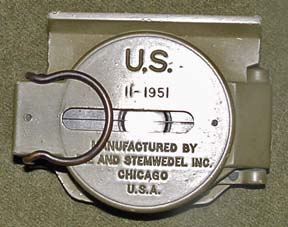
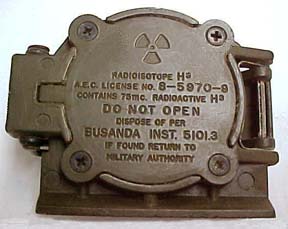
The lensatic is still issued, but now with comparatively safe tritium instead of radium. It is still just as crappy and has no damping fluid, so takes a good five times longer to get a decent reading which is not very repeatable from used to user.
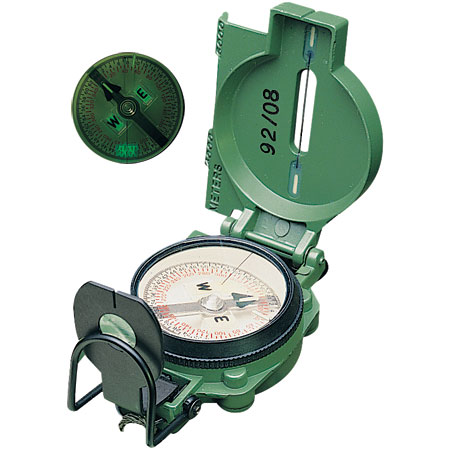
The MkIII, by comparison, reaches stability in 2 to 3 seconds and is accurate and repeatable between used to a half degree AT WORST.
Союз нерушимый республик свободных Сплотила навеки Великая Русь. Да здравствует созданный волей народов Единый, могучий Советский Союз!
-
-
Now the MkIII and M73 are not the only good compasses still in use out there... the Stanley G-150 is really rather good, though truth be told it's mostly a copy of the MkII in mils, but like the M73, it is without the cardinal points engraved on the outer case. It's also pretty pricey, but has a good reputation.
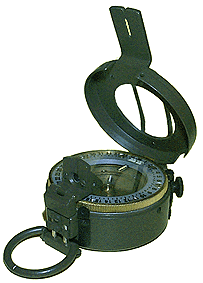
M73 for comparisson. Gee, I wonder if any patent lawyers made out well on this one???
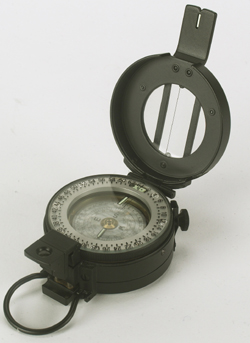
Союз нерушимый республик свободных Сплотила навеки Великая Русь. Да здравствует созданный волей народов Единый, могучий Советский Союз!
-
-
Now here is a nifty example of how early the Commonwealth forces were well ahead of many nations in their compass instruments. This is a 1913 pattern liquid-prismatic, also made by Francis Barker, used throughout WW1. These are very much like a MkIII apart from some more primitive materials being used in some places and a huge amount of radium in them (makes me wonder if artillery men and officers of WW1 were prone to cancer???). Still though, a very nice instrument that, with modern seals installed, I imagine would perform as well as a MkIII.
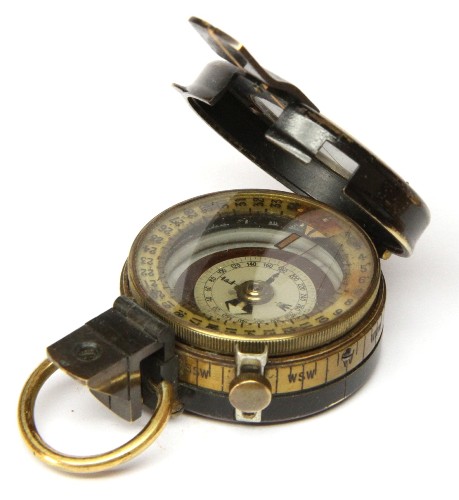
Союз нерушимый республик свободных Сплотила навеки Великая Русь. Да здравствует созданный волей народов Единый, могучий Советский Союз!
-
















 PM
PM


















